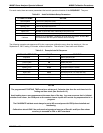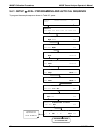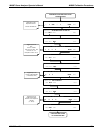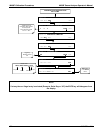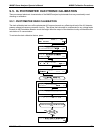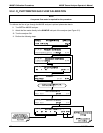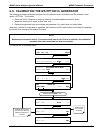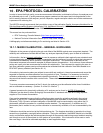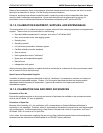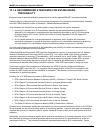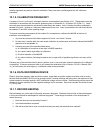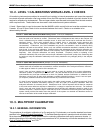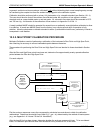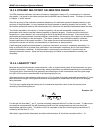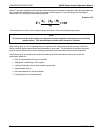
M400E Ozone Analyzer Operator’s Manual 346BEPA Protocol Calibration
10. EPA PROTOCOL CALIBRATION
In order to insure that high quality, accurate measurement information is obtained at all times, the analyzer must
be calibrated prior to use. A quality assurance program centered on this aspect and including attention to the
built-in warning features of the analyzer, periodic inspection, regular zero/span checks and routine maintenance
is paramount to achieving this.
The US EPA strongly recommends that you obtain a copy of the publication Quality Assurance Handbook for Air
Pollution Measurement Systems (abbreviated, Q.A. Handbook Volume II); USEPA Order Number:
EPA454R98004; or NIST Order Number: PB99-129876.
This manual can be purchased from:
EPA Technology Transfer Network (http://www.epa.gov/ttn/amtic
)
National Technical Information Service (NTIS, http://www. ntis.gov/)
A bibliography and references relating to O
3
monitoring are listed in Section 10.6.
10.1.1. M400E CALIBRATION – GENERAL GUIDELINES
Calibration is the process of adjusting the gain and offset of the M400A against some recognized standard. The
reliability and usefulness of all data derived from any analyzer depends primarily upon its state of calibration.
In this section, the term dynamic calibration
is used to express a multipoint check against known standards and
involves introducing gas samples of known concentration into the instrument in order to adjust the instrument to
a predetermined sensitivity and to produce a calibration relationship. This relationship is derived from the
instrumental response to successive samples of different known concentrations. As a minimum, three reference
points and a zero point are recommended to define this relationship. The instrument(s) supplying the zero air
and Span calibration gasses used must themselves be calibrated and that calibration must be traceable to an
EPA/ NIST primary standard (see Section 8.1.4.)
All monitoring instrument systems are subject to some drift and variation in internal parameters and cannot be
expected to maintain accurate calibration over long periods of time. Therefore, it is necessary to check the
calibration relationship on a predetermined schedule dynamically. Zero and span checks
must be used to
document that the data remains within control limits. These checks are also used in data reduction and
validation.
To ensure accurate measurements of the O
3
levels, the analyzer must be calibrated at the time of installation
and re-calibrated as necessary. (Section 12 of the Q.A. Manual.
11
)
A general procedure for dynamically calibrating a O
3
analyzer can be found in 40 CFR 50 Appendix C.
Calibration can be done by either diluting high concentration O
3
standards with zero air or using separate
supplies of O
3
at known concentration.
Care must be exercised to ensure that the calibration system meets the guidelines outlined in the revised
Appendix D, 40 CFR 50.
1
Detailed calibration procedures are also discussed in the Technical Assistance
Document (TAD).
2
Dynamic multipoint calibration of the M400E must be conducted by using either the UV
photometric calibration procedure or a certified transfer standard. The equipment (i.e. calibrator and UV
photometer) that is needed to carry out the calibration is commercially available, or it can be assembled by the
user.
Calibrations should be carried out at the field-monitoring site. The Analyzer should be in operation for at least
several hours (preferably overnight) before calibration. During the calibration, the M400E should be in the
CAL
mode, and therefore sample the test atmosphere through all components used during normal ambient sampling
and through as much of the ambient air inlet system as is practicable. If the instrument will be used on more
than one range, it should be calibrated separately on each applicable range.
04315 Rev. C1 171



